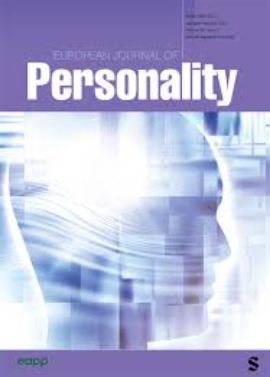Predicting romantic interest during early relationship development: A preregistered investigation using machine learning
IF 3.6
1区 心理学
Q1 PSYCHOLOGY, SOCIAL
引用次数: 6
Abstract
There are massive literatures on initial attraction and established relationships. But few studies capture early relationship development: the interstitial period in which people experience rising and falling romantic interest for partners who could—but often do not—become sexual or dating partners. In this study, 208 single participants reported on 1,065 potential romantic partners across 7,179 data points over 7 months. In stage 1, we used random forests (a type of machine learning) to estimate how well different classes of variables (e.g., individual differences vs. target-specific constructs) predicted participants’ romantic interest in these potential partners. We also tested (and found only modest support for) the perceiver × target moderation account of compatibility: the meta-theoretical perspective that some types of perceivers experience greater romantic interest for some types of targets. In stage 2, we used multilevel modeling to depict predictors retained by the random-forests models; robust (positive) main effects emerged for many variables, including sociosexuality, sex drive, perceptions of the partner’s positive attributes (e.g., attractive and exciting), attachment features (e.g., proximity seeking), and perceived interest. Finally, we found no support for ideal partner preference-matching effects on romantic interest. The discussion highlights the need for new models to explain the origin of romantic compatibility.预测早期恋爱关系发展中的浪漫兴趣:一项使用机器学习的预登记调查
关于最初的吸引力和已建立的关系,有大量的文献。但很少有研究能捕捉到早期关系的发展:在这段时间里,人们对可能成为性伴侣或约会伴侣的伴侣的浪漫兴趣忽高忽低。在这项研究中,208名单身参与者报告了7个月内7179个数据点的1065名潜在浪漫伴侣。在第1阶段,我们使用随机森林(一种机器学习)来估计不同类别的变量(例如,个体差异与特定目标结构)对参与者对这些潜在伴侣的浪漫兴趣的预测程度。我们还测试了(并发现只有适度的支持)感知者×目标适度的兼容性解释:元理论观点认为,某些类型的感知者对某些类型的目标有更大的浪漫兴趣。在第二阶段,我们使用多级建模来描述随机森林模型保留的预测因子;许多变量都出现了强大的(积极的)主效应,包括社会性行为、性欲、对伴侣积极属性的感知(例如,有吸引力和令人兴奋)、依恋特征(例如,寻求接近)和感知兴趣。最后,我们没有发现理想伴侣偏好匹配对浪漫兴趣的影响。讨论强调了需要新的模型来解释浪漫兼容性的起源。
本文章由计算机程序翻译,如有差异,请以英文原文为准。
求助全文
约1分钟内获得全文
求助全文
来源期刊

European Journal of Personality
PSYCHOLOGY, SOCIAL-
CiteScore
11.90
自引率
8.50%
发文量
48
期刊介绍:
It is intended that the journal reflects all areas of current personality psychology. The Journal emphasizes (1) human individuality as manifested in cognitive processes, emotional and motivational functioning, and their physiological and genetic underpinnings, and personal ways of interacting with the environment, (2) individual differences in personality structure and dynamics, (3) studies of intelligence and interindividual differences in cognitive functioning, and (4) development of personality differences as revealed by cross-sectional and longitudinal studies.
 求助内容:
求助内容: 应助结果提醒方式:
应助结果提醒方式:


